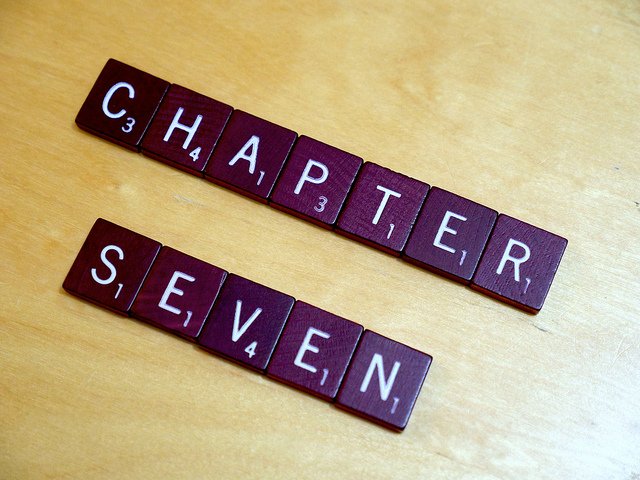Bankruptcy is defined as the process by which one can make payments or get rid of some of their debts under a federal court’s protection. Under the guidance of a judge, you and your creditors will work out an arrangement where the creditor may give you more favorable terms or forgive some of your debt. In return, you may have to give up some of your assets.
Needless to say, bankruptcy is bound to mess up your credit meaning that you are likely to find it difficult to borrow money for many years. Generally, there are two categories of bankruptcy i.e. Reorganization and Liquidation. The former entails the creditor and debtor working out a new payment plan while the latter is where the creditor seizes the debtor’s non-exempt assets and consequently forgives almost all if not all of the debt.
The main types of bankruptcy are Chapter 13 (reorganization) and Chapter 7 (liquidation). While the former is often preferable, it is much harder to qualify for. Below, therefore, we take a look at how to file for Chapter 7 bankruptcy as follows:
1. Determine Whether Bankruptcy is a Viable Option
As a rule of thumb, bankruptcy should only be used as a last resort having explored and exhausted all other available options.
2. Qualification
Find out if you qualify to file for chapter 7 bankruptcy. Such qualification is usually based on your family size and income relative to the state that you intend to file in. The process is commenced by filling a form referred to as the “Means Test”. If you qualify, you can proceed to enlist the services of a bankruptcy attorney. If not, your only option would be to file for Chapter 13.
3. Consult an Attorney
Enlisting the services of a bankruptcy attorney will allow you to determine whether filing for Chapter 7 is the best option available to you. In addition, the attorney should be able to guide you throughout the entire process.
4. Undergo Credit Counseling
This is a mandatory step that should set you back anything between $30 and $50 although the fee may be waved in certain circumstances. Remember, if you file your case without undergoing credit counseling, it is likely to be dismissed before you have had the chance to obtain your discharge. In case you are unsure of where to get credit counseling, there are plenty of Bankruptcy Trustee approved agencies across the country.
5. Fill Out the Paperwork
Besides the petition, you are also required to file a schedule of liabilities and assets, current expenditures and income, debts to be included in unexpired leases, executory contracts, and in the bankruptcy, a schedule of exempt assets, and under the newly revised bankruptcy code, a means test that is used by the trustee to determine any possible abuse of existing bankruptcy laws. These forms are free and can also be obtained online. However, they can be very user un-friendly especially to people who have very long names due to lack of space.
6. File Paperwork with Bankruptcy Court
As a debtor, you should then file your petition along with your completed paperwork and credit counseling certificate with the bankruptcy court that serves the area where you reside, or where you have most of your assets, or where you own a business. Once filed, you get a reprieve in that most legal actions will be “stayed” and your creditors will not be able to initiate or continue lawsuits against you, contact you demanding payment, or garnish wages. However, if you did not ask for a fee waiver in your application, the court will require a mandatory payment of $299 either through money order or cash. Also, the filing fee must be paid in full upon filing the initial petition although some bankruptcy courts do allow for the fee to be paid in installments.
7. Provide Pay Advice (pay check stubs)
At least 7 days before meeting your creditors, ensure that you provide your bankruptcy trustee with your most recent tax returns and a copy of pay check stubs.
8. Attend Creditors Meeting
About 25 to 40 days after filing your petition, a creditors meeting is held. You must avail yourself for such a meeting where the people you owe money will grill you on matters regarding your property and financial affairs. But in cases where most of your debt is non-secured, such meetings are a rarity.
9. Complete a Post-filing Instructional Course
Within 45 days of the creditors meeting, you are required to complete a Personal Financial Management Instruction Course that should set you back about $30. If you fail to do this, you stand the risk of having your case dismissed. Ensure you submit your certificate of completion as instructed.
10. Await Final Correspondence
Having completed the mandatory instruction course, you should now await final correspondence stating that your debts have been discharged. This should be a minimum of 61 days following conclusion of your meeting with creditors.
11. Time to Get Back on Track
The conclusion of the Chapter 7 bankruptcy process ends in discharge of all debts. You are no longer liable for the debts and creditors cannot take any legal action against you. You are now in a position to start the arduous task of rebuilding your credit.
Featured image source flickr.com/photos/lendingmemo/11702555793/



